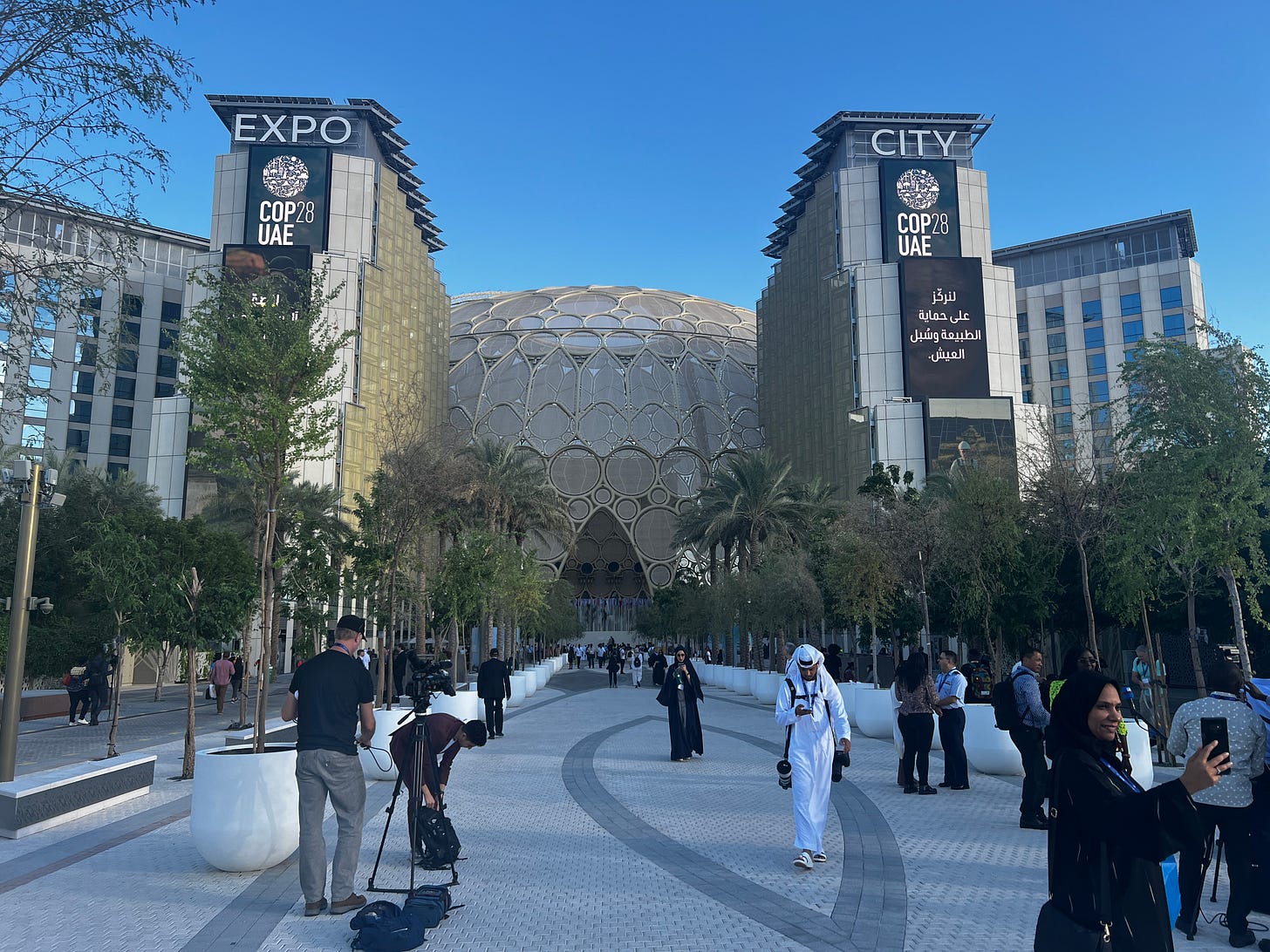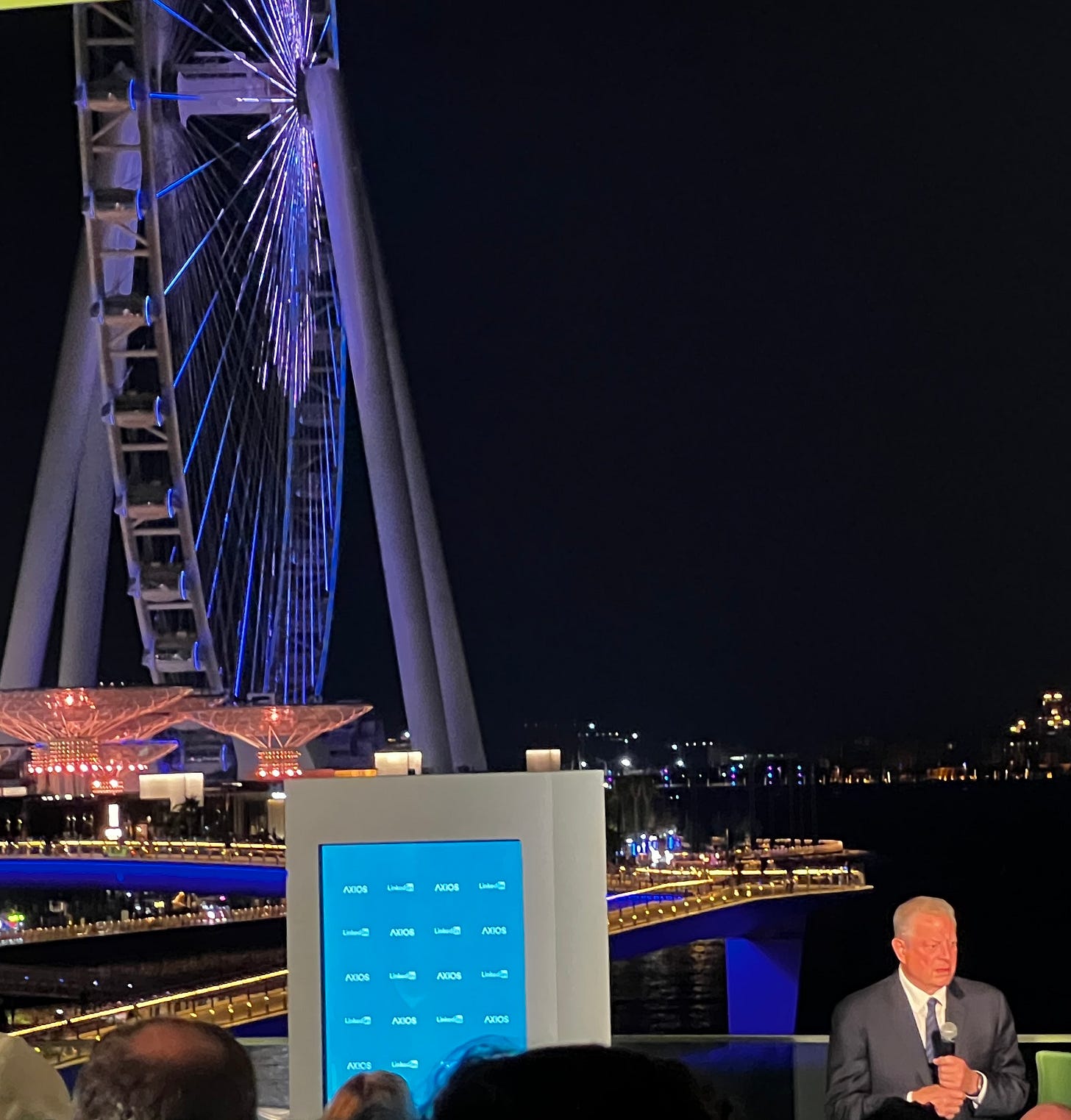COP28 Dubai Concludes with a Big Ask
For the first time, fossil fuels were fingered as the problem, and the need to transition away from them the challenge.
The year’s big climate conference, COP28, concluded in Dubai with what can only be described as a historic declaration of purpose, maybe even marking the beginning of the end of the fossil fuel era.
I covered the historic Paris COP back in 2015, as well as this one. The Paris meeting, COP21, set in motion the diplomatic process that, seven years on and far too many greenhouse gas emissions later, led to the agreement in Dubai. It took until this COP — overseen by the head of one of the world’s largest oil and gas companies, attended by more representatives of fossil fuel companies than any previous COP — for the international community to face up to the crux of the problem: fossil fuels.
And to declare that the solution is to wean ourselves, equitably and in an orderly way, largely off of them by 2050. That’s an astonishing statement of purpose, particularly at a conference dominated in so many ways by the fossil fuel industry and countries heavily dependent on both their sale and use.
Squarely stating the problem does not solve it, of course. Accomplishing this feat, if even possible on the deadline of 2050, will require a monumental and coordinated global effort. The path laid out by the Dubai agreement includes tripling renewable energy, doubling energy efficiency and pouring hundreds of billions of dollars into the energy transition, particularly in developing countries. That’s just the beginning. Far more of all of those things will be needed, as well as many others.
At this COP, as in Paris, there was a strong sense of hope being pulled from the jaws of despair in the final moments. Both conferences featured disappointing early draft agreements followed by frantic, almost desperate negotiations to get to a historic understanding that all parties were willing to sign on to, since all outcomes at these COPs must be unanimously agreed upon.
The difference was that this time, in contrast to Paris, the negotiations were led not by a climate hawk from a climate-friendly country, but by a fossil fuel company exec in one of the world’s most important oil and gas producing countries.
We’re in a whole new world now.
Yet we still face the same daunting challenge with tools only just now coming into their own to address it. For the next decade, success will largely depend on how much money and will governments, companies, civil society organizations and just regular people muster to replace coal, oil and gas — largely in that order — with solar and wind power, and energy efficiency tools such as heat pumps for heating and air conditioning and electric vehicles for getting around.
A drive to reduce methane emissions — bolstered, again, by a pledge by oil and gas companies in Dubai to nearly eliminate one of the biggest sources, fossil fuel extraction and distribution — will buy time in the near-term. Methane is a far, far more potent greenhouse gas than carbon dioxide in the two decades hangs in the atmosphere, so cutting off the source now can make a big difference while clean energy technologies gain traction.
For beyond the next decade, we’ll need to get started now bringing those promising technologies along — geothermal energy from underneath the earth, hydrogen to decarbonize some of the hardest things to make without greenhouse gas emissions, such as steel and cement. This last will be particularly critical for the developing world, where much of the economic growth, urbanization, and construction will take place in the next three decades.
Nuclear energy will play a growing role, first in the form of more traditional fission reactors. China is already set to roll these out at the pace of close to ten a year, which in addition to eye-popping amounts of wind and solar there are very likely to send the world’s biggest emitter’s emissions into decline. Japan is returning to the nuclear fold. Newfangled smaller reactors will come on line early in the 2030s, perhaps revolutionizing even shipping and helping phase out coal power plants.
Later still — but not so far off it didn’t generate buzz at this COP — nuclear fusion could begin changing everything all over again. Fusion is an essentially endless source of clean energy. You can read more about that here in my story for Cipher.
All this is encouraging, very encouraging. But the work still has to be done. And the inclusion of the words, “…in a just, orderly and equitable manner…” to describe the transition away from fossil fuels provides only the blandest hint at what could go wrong in the years and decades ahead.
Vast sums of money will have to find their way from the wealthy — countries and peoples — to developing nations, communities and people to make this transition possible. Much of that can be done on an economic basis, providing a return on capital for monied investors and a return on development for recipients. But the money will have to move, starting now. And that’s hard.
Huge capital projects will have to be built, from transmission grids to offshore wind farms at a time when capital is relatively costly. And an even larger existing fossil fuel based energy system will have to carefully, but relatively quickly wound down.
That’s hard, too, to say the least. What took hundreds of years to build up, must be largely dismantled in decades. That’s never happened before.
But that’s the historic promise of COP28. Now comes the work of delivering on it.








